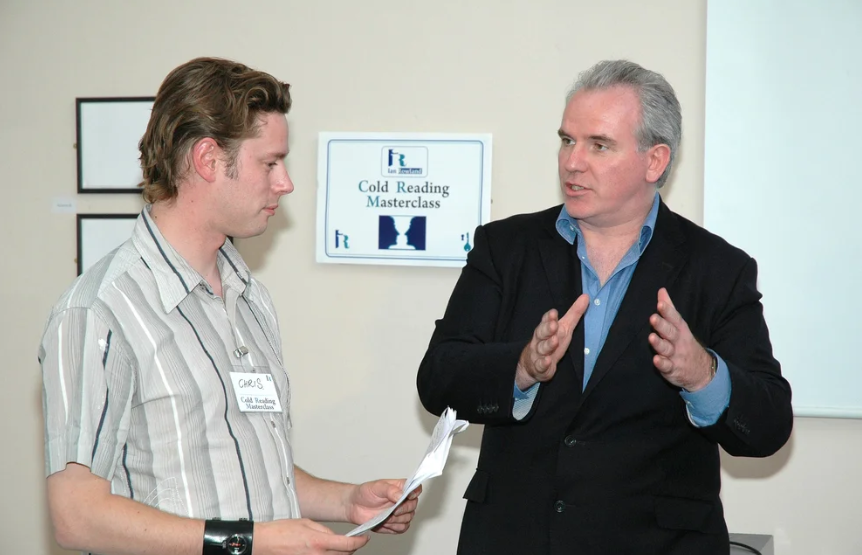Cold Reading Psychology: The Science Behind the Illusion
Cold Reading Psychology: The Science Behind the Illusion
Have you ever seen a psychic or mentalist appear to know personal details about someone they’ve just met? To the untrained eye, it looks like magic. In reality, it’s all about Cold reading psychology a fascinating mix of observation, suggestion, and human behaviour.
Understanding Cold reading psychology reveals how simple statements can feel deeply personal, and why so many people find these techniques convincing.
What Is Cold Reading Psychology?
At its core, Cold reading psychology explains how general statements, clever phrasing, and subtle observation can be mistaken for genuine insight. No supernatural powers are involved. Instead, performers rely on:
Observation – Reading clues from body language, clothing, or tone.
Language Patterns – Framing broad truths in a way that sounds specific.
Cognitive Biases – Using natural tendencies like confirmation bias to their advantage.
This is why Cold reading psychology is so effective: it works with how the human mind interprets information.
Why Cold Reading Psychology Works
The success of Cold reading psychology lies in universal psychological patterns:
The Barnum Effect – People believe vague, flattering statements are uniquely true.
Confirmation Bias – We remember “hits” and forget the “misses.”
Flattery – People are more likely to accept positive insights.
Cooperation – Many subjects unconsciously supply the missing details.
These tendencies explain why Cold reading psychology convinces even intelligent, sceptical people.
Core Techniques in Cold Reading Psychology
Here are some of the most common tools within Cold reading psychology:
1. Barnum Statements
“You sometimes doubt yourself, but you also know you’re capable of more.” A classic in Cold reading psychology, because it applies to nearly everyone.
2. The Rainbow Ruse
“You’re confident around others, but sometimes you keep things private.” This contradiction is a staple of Cold reading psychology.
3. Jacques Statements
“As you’ve grown older, your priorities have shifted.” Age-based statements are widely used in Cold reading psychology.
4. Fishing
“I sense someone important to you has a name starting with J.” Fishing is one of the most recognisable Cold reading psychology techniques.
5. Observational Reads
Noticing jewellery, clothing, or posture and turning it into an “insight” is a practical example of Cold reading psychology.
Everyday Uses of Cold Reading Psychology
Though often linked to psychics, Cold reading psychology has many real-world applications:
Sales – “You’re looking for value, but you don’t want to compromise on quality.”
Leadership – “You’re ambitious, but you also want balance in life.”
Coaching – Broad but supportive phrases rooted in Cold reading psychology help clients reflect.
Social Interactions – Relatable comments create connection in casual conversation.
This proves that Cold reading psychology is not just a performance trick it’s a communication tool.
How to Spot Cold Reading Psychology
If you want to avoid being misled, learn to recognise Cold reading psychology in action. Look for:
Flattering but vague statements.
Contradictions that cover all possibilities.
Guesses disguised as confident truths.
References to universal experiences like love or family.
Once you’re aware of it, Cold reading psychology becomes much easier to detect.
Cold reading may look like magic, but it’s simply psychology in action. By understanding Cold reading psychology, you can see how performers and psychics create the illusion of insight using observation, language, and human bias.
From Barnum statements to fishing guesses, Cold reading psychology reveals the fascinating ways we interpret information. Whether you want to protect yourself from being misled or use these techniques ethically in communication, learning about Cold reading psychology is both practical and empowering.





